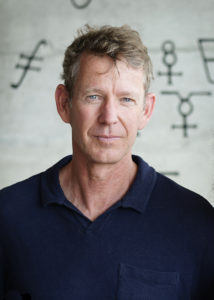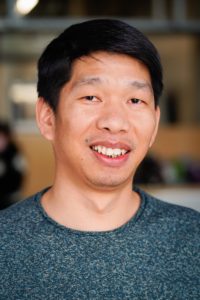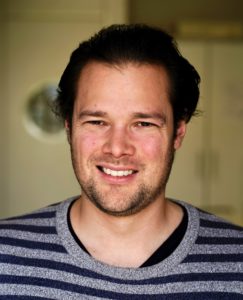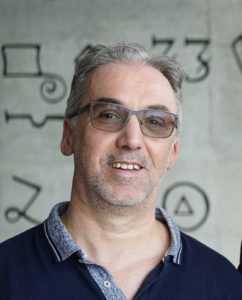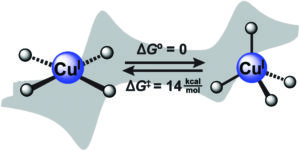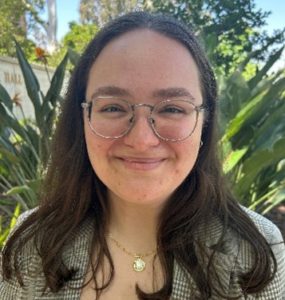| We are delighted to announce the winner of our 2024 Outstanding Paper Award.
The Outstanding Paper Award is aimed at recognising the great work published in Dalton Transactions from the previous year. The process for selecting the winner involves the shortlisting of papers based on nominations by members of the Editorial Board as well as a variety of metrics including article downloads, Altmetric score and citations. The Editorial Board then votes on this shortlist to select the winner. Congratulations to this year’s winners:
In this outstanding article, the authors explored new reaction patterns of a doubly CAAC-stabilised 9,10-diboraanthracene derivative with small molecules and highlighted the structural and electronic flexibility of this framework through complexation with group 6 carbonyls. Meet the authors of this outstanding paper
Please join us in congratulating this year’s winners on our Bluesky, @DaltonTrans.rsc.org, and LinkedIn, Inorganic #RSCInorg! |
Archive for the ‘Awards’ Category
Dalton Transactions Outstanding Paper Award 2024
The 2024 Dalton Transactions Best Cover Award Winners
This year, Dalton Transactions has introduced three new awards to celebrate the cover artworks published in our journal each year. These awards were voted for by the Dalton Transactions Editorial Board, our Editorial Office and the inorganic community via social media. We are delighted to announce this year’s winners below.
Winner of the 2024 Dalton Transactions’ Best Cover Award, chosen by our Editorial Board:
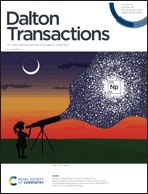
Outside front cover, Issue 48 |
Electroanalytical characterization of Np(vi)/Np(v) redox in a pentadentate ligand environment and stabilization of [NpVO2]+ by hydrogen bonding (Open Access)
Emily R. Mikeska, T. Davis Curry, Richard E. Wilson* and James D. Blakemore* Dalton Trans., 2024, 53, 19126-19142 |
Winner of the 2024 Dalton Transactions’ Best Cover Award, chosen by our Editorial Office:
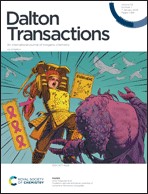
Outside front cover, Issue 1 |
Oxidation-derived anticancer potential of sumanene–ferrocene conjugates (Open Access)
Artur Kasprzak*, Agnieszka Zuchowska, Pawel Romanczuk, Agata Kowalczyk, Ireneusz P. Grudzinski, Anna Malkowska, Anna M. Nowicka and Hidehiro Sakurai Dalton Trans., 2024, 53, 56-64 |
Winner of the 2024 Dalton Transactions’ Best Cover Award, chosen by the Dalton Transactions community:
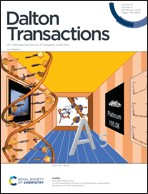
Outside front cover, Issue 8 |
On the mechanism of action of arsenoplatins: arsenoplatin-1 binding to a B-DNA dodecamer (Open Access)
Romualdo Troisi, Gabriella Tito, Giarita Ferraro, Filomena Sica, Lara Massai, Andrea Geri, Damiano Cirri, Luigi Messori and Antonello Merlino* Dalton Trans., 2024, 53, 3476-3483 |
Explore all of last year’s covers in our cover gallery, which includes links to the articles behind each cover.
Have you thought about highlighting your work on one of our covers?*
Articles that are associated with a cover receive an average of 35% more downloads than articles without. To achieve this, the Editorial Office will take extra steps to enhance the visibility of your article.
When your article and cover are published, we will:
- Make your article free to access for 6 weeks, ensuring global reach
- Insert your cover into the PDF of your article, making it more prominent to readers
- Place your article towards the front of the issue, where it will be more readily accessible to readers
- Promote your article and your cover through our social media channels
- Include your article in our ‘Articles behind the covers’ online themed collection, see our 2025 collection as it grows, here.
- Enter your artwork into our annual Cover Artwork competition
- Feature your article in the cover gallery on our blog
- Send you a high-resolution electronic copy of the cover for you to use in presentations or print and display at your institution
- For front covers, highlight your cover in the contents page of the journal online
If you are interested in showcasing your research on one of our covers, once your article has been accepted for publication, please do contact the Editorial Office for further information.
Please join us in congratulating this year’s winners and make sure to read all the work behind our 2024 covers, here.
*Please note that authors are required to pay a fee for this service. All covers are typically £1000 (plus applicable taxes). All covers must be approved prior to publication and will be used at the discretion of the Editorial Office.
Dalton Transactions Outstanding Paper Award 2023
We are delighted to announce the winner of our 2023 Outstanding Paper Award.
The Outstanding Paper Award is aimed at recognising the great work published in Dalton Transactions from the previous year. The process for selecting the winner involves the shortlisting of papers published in the journal within the previous year based on nominations by members of the Editorial Board as well as a variety of metrics including article downloads, Altmetric score and citations. The Editorial Board then votes on this shortlist to select the winner.
|
Construction of Pd-based coordination cages with three geometrically distinct ligands Ru-Jin Li, Jean de Montmollin, Farzaneh Fadaei-Tirani, Rosario Scopelliti and Kay Severin* Dalton Trans., 2023, 52, 6451-6456 |
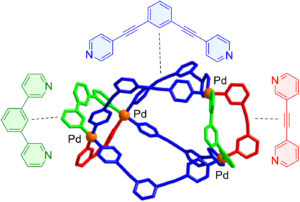
|
In this outstanding article, the authors combined three different dipyridyl ligands with [Pd(CH3CN)4](BF4)2 to give mixtures of homo- and/or heteroleptic coordination cages. They found that the structural flexibility of ligands with alkynyl spacers were important for the formation of the heteroleptic complexes.
Meet the authors of this outstanding paper
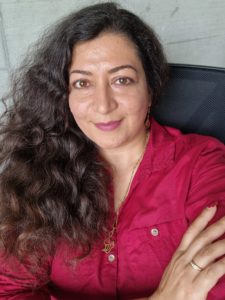 |
Farzaneh Fadaei-Tirani
Farzaneh obtained her PhD in inorganic chemistry from the Isfahan University of Technology in 2013. During her PhD and a post-doctoral stay at EPFL, she discovered her passion for crystallography. In 2016, she began working for ISIC and became tenured in 2019. She is routinely solving structures of small molecules, supramolecular assemblies and MOFs. She is particularly interested in phase transitions of perovskites and modulated organic molecules. She also enjoys teaching and training the users of the Open Access Facility at the EPFL. |
Dalton Transactions Outstanding Paper Award 2022
We are delighted to announce the winner of our 2022 Outstanding Paper Award.
The Outstanding Paper Award is a new award aimed at recognising the great work published in Dalton Transactions from the previous year. The process for selecting the winner involves the shortlisting of papers published in the journal within the previous year based on nominations by members of the Editorial Board as well as a variety of metrics including article downloads, Altmetric score and citations. The Editorial Board then votes on this shortlist to select the winner.
| Conformationally dynamic copper coordination complexes
Bronte J. Charette, Paul J. Griffin, Claire M. Zimmerman and Lisa Olshansky* Dalton Trans., 2022, 51, 6212-6219 |
|
In this outstanding article, the authors explored the interplay between molecular and electronic structure for a series of Cu(I) and Cu(II) complexes with dpaR ligands through various spectroscopic and physical techniques.
Meet the authors of this outstanding paper
| Lisa Olshansky
Lisa Olshansky is an Assistant Professor of Chemistry at UIUC. She received her PhD from MIT in 2015. Her current research focuses on mimicking the ways that biological systems efficiently interconvert different forms of energy. Specifically, she hypothesizes that there is a critical interplay between macroscopic changes in molecular structure and subatomic changes in electronic structure that can be leveraged for diverse applications ranging from solar energy conversion to biomedical research. Olshansky has been named a Searle, Vallee, and Cottrell Scholar, a Kavli fellow (2022), and has received early career research awards from the NIH and DOE. |
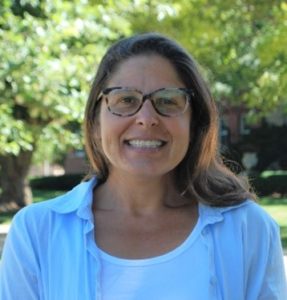 |
 |
Bronte Charette
Bronte obtained her B.Sc. in Chemistry from the University of Winnipeg where she began her research career in synthetic inorganic chemistry which she continued during her M.Sc. studies under the supervision of Prof. Jamie Ritch at the University of Manitoba. In 2021, Bronte received her Ph.D. in Chemistry from the University of California, Irvine as a Natural Science and Engineering Research Council of Canada (NSERC) Postgraduate Doctoral Fellow with Prof. Alan Heyduk. Her postdoctoral work with Prof. Lisa Olshansky focused on synthesizing switchable transition metal complexes for renewable energy conversion strategies. Bronte is excited to start her independent career as an assistant professor at UC Davis this summer. |
| Paul Griffin
Paul Griffin received his bachelor’s in chemistry and philosophy (2016) and his Master’s in chemistry (2018) from the University of Scranton. His master’s research was conducted under Dr Art Catino in which he developed a general approach to synthesize substituted tetraarylmethanes. Paul recently obtained his PhD in inorganic chemistry at the University of Illinois, Urbana-Champaign (2023), where he works with Lisa Olshansky to study the relationship between conformational dynamics, photochemistry, and electron transfer in copper coordination complexes. Paul is passionate about mentoring the next generation of scientists and explores his philosophy interests by having riveting discussions with his cat, Mookie. |
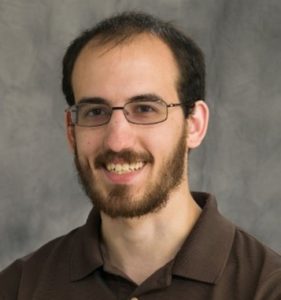 |















